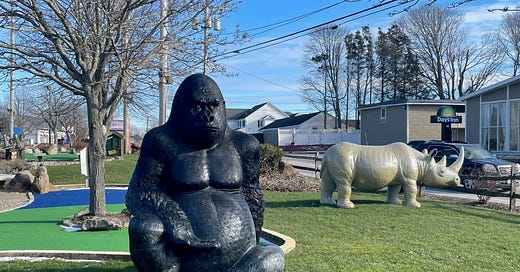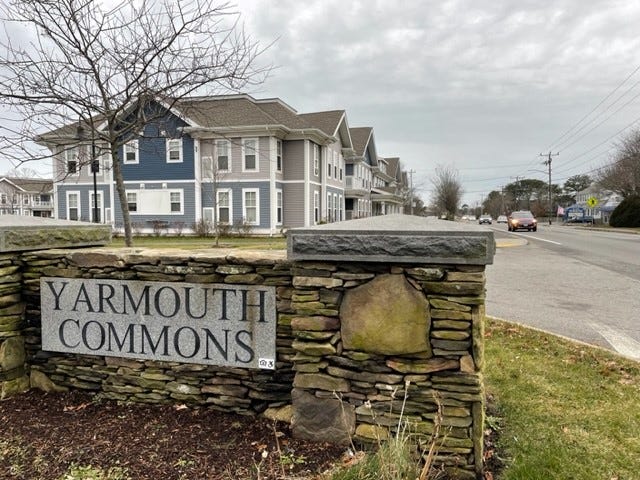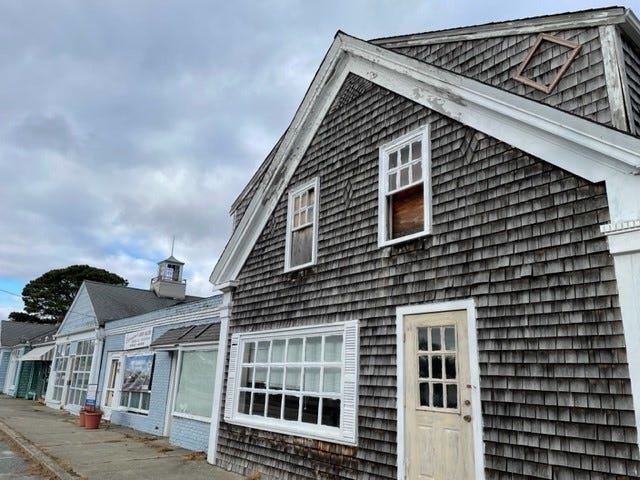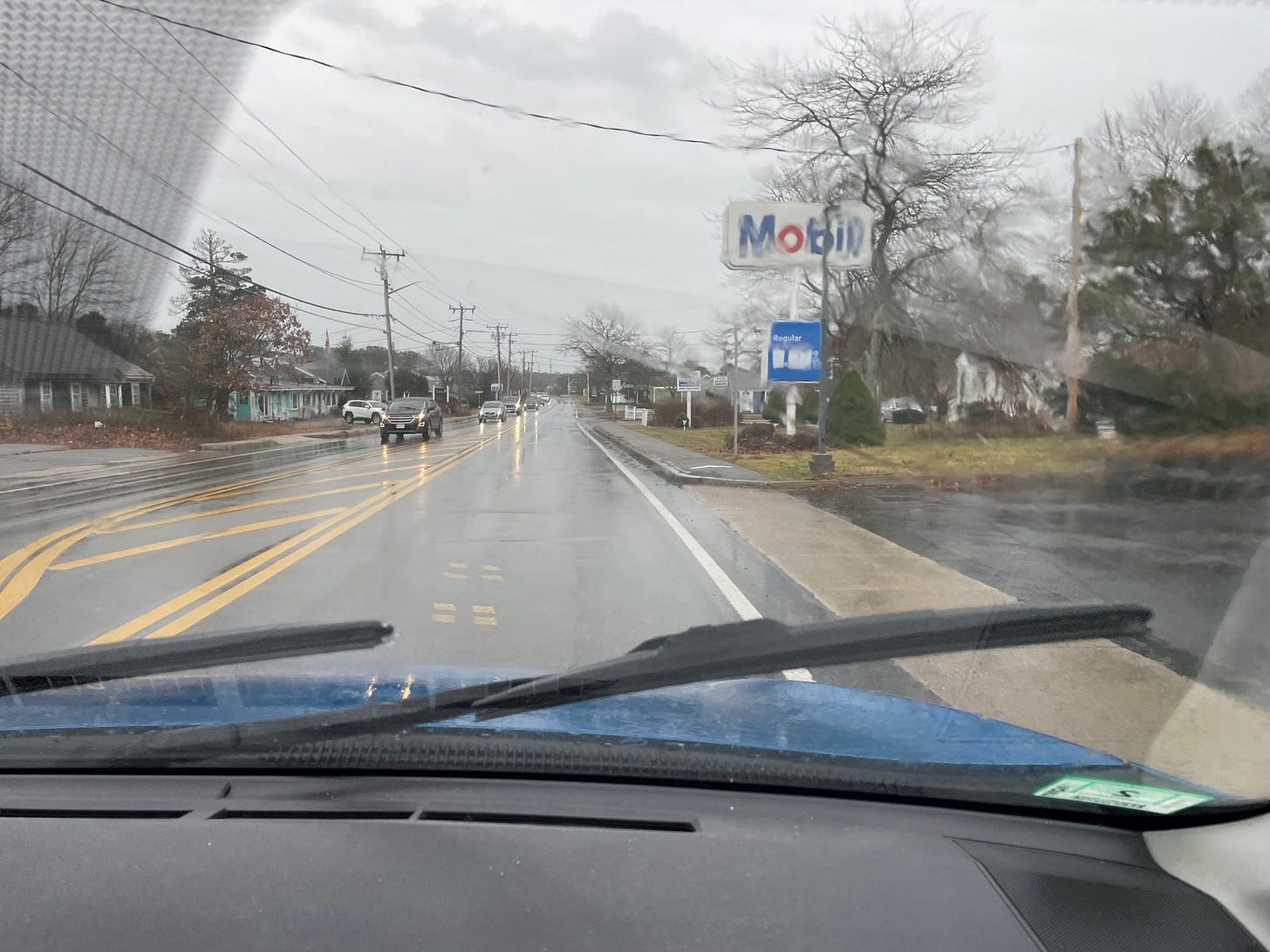One road, more than any other, holds the key to Cape Cod’s future. You might be surprised by its name:
Route 28.
And of all the towns Route 28 courses through, one is at the epicenter of potential:
Yarmouth. Particularly West Yarmouth.
Along this ribbon tying West Dennis to Hyannis, some see blight pocking bustle, honky tonk, tired architecture alongside nondescript shopping plazas, environmental challenges, motels and cottages from yesteryear, restaurants more fast than slow, kitsch statues, mini-golf courses featuring pirates and animals.
All that’s there – and by the way, no noses should turn up at this vitality, this Americana.
But there is more on display:
Investment, promise, opportunity, and scores of businesses making it work.
To use the planners’ lingo:
If there’s a place on Cape Cod where tourism and commercial renovation can maintain and upgrade while bringing on year-round workforce housing, where small mixed-use communities can emerge, where “undevelopment” can raze 1950s-style construction to make pocket parks and community green space, this is it.
I recommend driving up and down Route 28, then cruising again – and again. Even better for me, riding shotgun with savvy guides from Yarmouth Town Hall like Community Development Director Karen Greene and Building Inspector Mark Grylls reveals how past, present, and future combine and collide on a strip where ambition and frustration, success and heartbreak, are neighbors.
Plus – this is important -- ownership and effort remain mostly individual, family, independent, entrepreneurial, by and large avoiding homogeneous corporate smackdowns that have become the norm along so many strips.
The challenges are profound, from zoning and building regs to wastewater, how to reinvent a swath that never paid attention to the environment, access capital, work past resistance and stigma about affordable housing in around and above storefronts.
In short, this is where the action is.
Here are some snapshots:
Take an old motel called the Cavalier, overlay some zoning that allows for year-round housing, secure permits and serious money, bring in construction crews, and you have Yarmouth Commons. Right on Route 28, almost 70 units qualify as affordable housing. It’s dense two-story suburban but designed to be handsome, addressing a big need, and plans are moving to extend the look to neighboring properties.
The Commons is not to be confused with Yarmouth Gardens, another affordable housing reno down the road, less visible but still substantial; 40 units tucked behind an elephant trumpeting a store that highlights products from India.
Speaking of motels, there are many that harken back decades in various stages of repair and renovation, open and closed. In no particular order, there is the Brentwood, Mariner, Hunter’s Green (now Freebird), Sunbird, Day’s Inn, the former Mayflower and Cape Travelers, an Econo Lodge, Aiden by Best Western. The Pine Knot cottages, cheek to jowl, are mid-20th century funky, like Yarmouth Country Cabins and Beachwood.
Who still vacations in these places? A lot of families, plus weekend or weekday trippers. But many of the units also have become season-long or year-round homes for working people (and people not working), including those sending kids to local public schools where they get their breakfasts and lunches. This is not a situation Cape Cod wants to highlight or even acknowledge, but addressing this reality, and transforming it into housing we can celebrate, is where we want to go.
Visitors in motels need to eat. Some restaurants on 28 seem like they have been there forever, institutions with loyal followings like Captain Parker’s, Giardino’s, the Yarmouth House, Ann and Fran’s Kitchen to name a few. There are pubs, takeout, good roast beef and fried seafood, also the venerable Lobster Boat Restaurant with a ship’s hull beside Parker’s River where for decades many a red lobster has been plunked on a plate.
How many jobs do they represent? The number is huge. How much wastewater and other infrastructure demands do they create? Huge again. Has public policy and community investment addressed those combined facts? Not really.
The Cape Cod Inflatable Park on a good summer day can bring more than 2500 people to float and frolic along Route 28 – and sleep over, and shop at nearby stores. The expanding park and related businesses are much more of an economic driver than the defunct drive-in movie site across the street; 18 acres, only cracked asphalt remaining, home to long-awaited plans for a riverwalk park with a boardwalk loop and artist shanties, funded in large part by millions of taxpayer dollars via the Community Preservation Act.
If there is a posterchild for a mini-strip that suggests “blight,” Great Island Plaza gets nominated, forlorn buildings once home to homegrown businesses. A boarded-up Mobil station across the street doesn’t help. The “plaza” presents as serious disrepair disguising serious potential. The parcel’s owner reportedly lives overseas and wants to bring it back to life, perhaps with a housing component added; site plans, zoning, infrastructure, and funding must align.
Another form of conversion happened down the road at the old Mill Hill Club, once a rocking, cavernous nightspot that packed hardcore partiers for years. Now it’s a facility for assisted living and dementia care; a far different need addressed. A smaller rocking joint called Rascal’s transformed another way; demolished for open space, one of several Route 28 “pocket parks” with views to the water beyond.
Speaking of open space, here and there odd lots in private ownership remain, overgrown with brush and scrub, cleared or scarred. Most have backstories and plans afoot, on hold, or shelved; a Starbucks? A car dealership? Habitat for Humanity housing? More parking? A motel expansion or swimming pool? A future septic treatment plant?
Speaking of wastewater, once again Route 28 is at the heart of how the Cape will address its most crucial, expensive issue. If there is one thing holding back renewal and redefinition along the artery, lack of basic infrastructure is it. Thinking below the surface, every one of these properties needs its own septic system within density far beyond what today’s rules and regs would allow. Public funds re-opened tidal flow into Parker’s River with a new culvert under 28, a great restoration project that improves water quality and stops fish kills, but nowhere is the broader collision of economic growth and environmental protection more immediate.
Each project mentioned, with many more on the table, would be considered a game changer in many smaller Cape towns. Taken together, the game that could change is called Cape Cod’s future, including our capacity to hold onto the idea that we are more than a rich person’s playground.
As we roll through 2023, I revisit Route 28, introducing you to some of the people who have staked their futures on the success of this stretch. They have vision, they are entrepreneurs, they have guts -- and frustrations.
They are, literally and figuratively, where the rubber meets the road.
Haven’t subscribed yet? To keep seeing a Voice (a cool trick), please support this local expression:










With your chops as a documentary filmmaker, I'd love to see you make short video to accompany some of these, as a link, however.
Fascinating. I know so little about this stretch of the cape. I just may explore 28 this winter on our way out to the solitude of Truro and off season Provincetown.